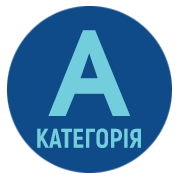ASSESSING THE POTENTIAL HEALTH RISKS OF PESTICIDES USED FOR BERRY AND MELON CROPS IN CONTAMINATION OF GROUND AND SURFACE WATERS
DOI:
https://doi.org/10.32782/2226-2008-2025-1-14Keywords:
herbicides, insecticides, fungicides, chemical water pollutants, risk assessmentAbstract
The aim: to assess the health risks of pesticides used for the berry and melon crops in case of the ground and surface waters contamination. Materials and methods: natural hygienic experiments, during which chemical-analytical (high-performance liquid chromatography (HPLC), gas-liquid chromatography (GLC), mathematical and statistical methods were used. Results: the research showed that according to the integral groundwater hazard contamination index (IHCI) fludioxonil, pyraclostrobin, and pendimethalin are slightly hazardous for humans (class 4); phenhexamide, boscalid, fluxapiroxad, azoxystrobin, spirodiclofen, and abamectin are moderately hazardous (class 3); cyprodinil, difenoconazole, metalaxyl-M, and glyphosate are hazardous (class 2); and within the private farming: penconazole, and abamectin refer to class 3 (moderately hazardous), difenoconazole, azoxystrobin, and metalaxyl-M to class 2 (hazardous). Conclusions: the study revealed acceptable degree of the health risk of pesticides used for berry and melon crops, associated with consumption of contaminated water.
References
Korshun MM., Martіianova YV. Hygienic assessment of the potential risk for public health caused by groundwater and surface water pollution by pesticides of various chemical classes. Medicni Perspektivi. 2022; 27 (3):149–156. https://doi.org/10.26641/2307-0404.2022.3.265963 (In Ukrainian).
Li Z, Jennings A. Worldwide Regulations of Standard Values of Pesticides for Human Health Risk Control: A Review. Int J Environ Res Public Health. 2017;14(7): 826 doi: 10.3390/ijerph14070826.
Regulating Pesticides through Risk Assessment. 2017 Available from: http://npic.orst.edu/reg/risk.html
Pesticide Science and Assessing Pesticide Risks. 2024 Available from: https://www.epa.gov/pesticide-science-and-assessingpesticide-risks/models-pesticide-risk-assessment#atmospheric
Rao K.S. Pesticide Risk Assessment. Eurofins Advinus Limited, Bangalore. Available from: https://www.advinus.com/pesticide-risk-assessment/
Karunanidhi D, Subramani T, Srinivasamoorthy K, Yang Q. Environmental chemistry, toxicity and health risk assessment of groundwater: Environmental persistence and management strategies. Environ Res. 2022; 214(Pt 4):113884. doi: 10.1016/j.envres.2022.113884.
Avtorskyi paket MedStat v. 5.2 Liakh Yu.Ie., Hurianov V.H., 2003-2019 rr.
SCI-GROW (Screening Concentration In GROund Water) / Water Models / Pesticides: Science and Policy/US ЕРА. Available from: https://archive.epa.gov/epa/pesticide-science-and-assessing-pesticide-risks/sci-grow-description.html
Hihiienichna klasyfikatsiia pestytsydiv za stupenem nebezpechnosti: DSanPiN 8.8.1.002-98 [Hygienic Classification of Pesticides by Hazard DSanPiN 8.8.1.002-98]. Kyiv; 1998: 20 p. (In Ukrainian). Available from: https://zakon.rada.gov.ua/rada/show/va002282-98#Text
Gustafson DI. Groundwater ubiquity score: A simple method for assessing pesticide leachability. Environmental Toxicology and Chemistry.1989; 8(4):339-357 https://doi.org/10.1002/etc.5620080411
Groundwater Ubiquity Score (GUS. National pesticide information center).2023 Available from: http://npic.orst.edu/envir/gus.html
Vavrinevych OP., Antonenko AM., Omelchuk ST., Korshun MM., inventors; Bogomolets National Medical University, assignee. [A method of comprehensive assessment of the risk of adverse effects of pesticides on the human body by being washed into water]. Patent Ukraine 105429, MPK A61V 10/00. 2016 March 25. (in Ukrainian).
Bilous ОS., Vavrinevych OP. Matematychne modeliuvannia povedinky pestytsydiv u hrunti ta otsinka nehatyvnoho vplyvu na orhanizm liudyny pestytsydiv u promyslovykh umovakh pry yikh nadkhodzhenni v hruntovi vody. [Mathematical modeling of the behavior of pesticides in soil and assessment of the negative impact of pesticides on the human organism in industrial conditions when they enter groundwater]. Odesa Medical Journal. 2023;3 (184):99–103. DOI: https://doi.org/10.32782/2226-2008-2023-3-18 (In Ukrainian).
Antonenko A.M., Vavrinevych O.P., Omelchuk S.T., Bardov V.H., Shpak B.I. Model otsinky ryzyku zabrudnennia gruntovykh i poverkhnevykh vod pestytsydamy ta prohnozuvannia nebezpeky pry yikh potraplianni v orhanizm liudyny z vodoiu. Informatsiinyi lyst № 192-2019. m. Kyiv. 2019. 4 s. (In Ukrainian).
PPDB: Pesticide Properties Data Base. Available from: http://sitem.herts.ac.uk/aeru/footprint/en/.
Korshun, M., Martiianova, Yu., Shkinder, T. Otsinka ryzyku dlia zdorovia naselennia amikarbazonu yak potentsiinoho zabrudniuvacha gruntovykh ta poverkhnevykh vododzherel v gruntovo-klimatychnykh umovakh Ukrainy. Collection of scientific papers ΛΌГOΣ. 2021. https://doi.org/10.36074/logos-09.04.2021.v2.30 (In Ukrainian).
Korshun M., Martіianova Y. Hygienic assessment of the potential risk for public health caused by groundwater and surface water pollution by pesticides of various chemical classes. Med. perspekt. 2023; 27(3):149-56. Available from: https://journals.uran.ua/index.php/2307-0404/article/view/265963 (In Ukrainian).
Antonenko АM, Borysenko AA, Omelchuk ST, Pelo IM, Babienko VV. Hygienic assessment of the pesticides migration in soil and surface water after agricultures processing using innovative technologies and revealing of the risk of their negative impact on human health. Odesa Medical Journal. 2023;2:84-87. (in Ukrainian). https://doi.org/10.32782/2226-2008-2023-2-15
Ruda TV, Korshun MM. Prohnozuvannia nebezpechnosti zabrudnennia gruntu ta pidzemnykh vod pry zastosuvanni pestytsydiv riznykh klasiv dlia zakhystu oliinykh kultur v gruntovo-klimatychnykh umovakh Ukrainy. Ukrainian journal of modern toxicological aspects. 2017; 1-2:109-119. Available from: http://nbuv.gov.ua/UJRN/spt_2017_1-2_12 (In Ukrainian).
Kruć-Fijałkowska R, Dragon K, Drożdżyński D, Górski J. Seasonal variation of pesticides in surface water and drinking water wells in the annual cycle in western Poland, and potential health risk assessment. Sci Rep. 2022; 12(1):3317. doi:10.1038/s41598-022-07385-z






